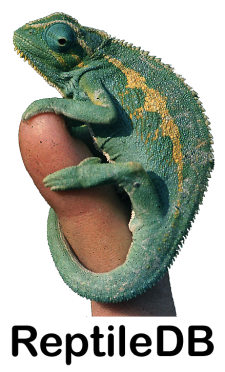
The Reptile Database
News
December 2022 - New Release!
- We reached another record-breaking 11,940 reptile species, 120 more than in the previous release (July 2022).
- Together with 2,158 subspecies (not counting nominate subspecies), reptiles have well over 14,000 valid taxa now.
July 2022 - New Release!
- With this release, we have reached 11,820 reptile species (up from 11,733 in our last release, March 2022).
- In fact, we are approaching 14,000 taxa with a total of 13,987 reptile taxa in this release (11,820 species + 2,167 subspecies, not counting nominate subspecies).
- 157 species-level changes have been added to this release, with 71 new species, 10 species revalidated from synonymy and 16 species elevated from subspecies level.
March 2022 - New Release!
- With this release, we have reached 11,733 reptile species (up from 11,690 in our last release, Nov. 2021).
- We have 134 changes on the level of species, with 41 new species, 12 species revalidated from synonymy and 23 species elevated from subspecies level.
Overview
The Reptile Database is a taxonomic database that provides basic information about all living reptile species, such as turtles, snakes, lizards, and crocodiles, as well as tuataras and amphisbaenians, but does not include dinosaurs.
Currently there are more than 10,000 species and an additional 2,700 subspecies. This is making reptiles the largest vertebrate group after fish (~25,000 species) and birds (~10,000 species), and significantly larger than mammals (~5,000 species) or amphibians (~6,000 species).
The Reptile Database provides taxonomic information for the Catalogue of Life and the Encyclopedia of Life. Our taxonomic information has also been used by GenBank and many other resources and is the only comprehensive reptile database on the web.
The reptile database can be used to find all species within a certain geographic area (e.g. all snakes of Egypt). Its collection of more than 2,500 images allow users to identify a species or at least get an idea how the species or genus may look like. More than 30,000 references provide a guide to further information.
